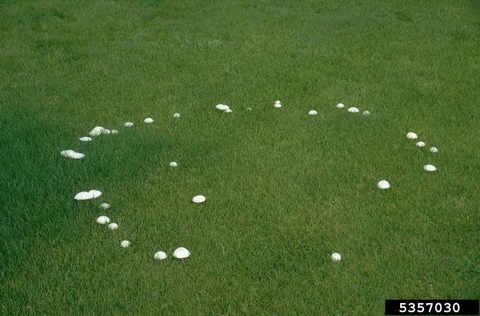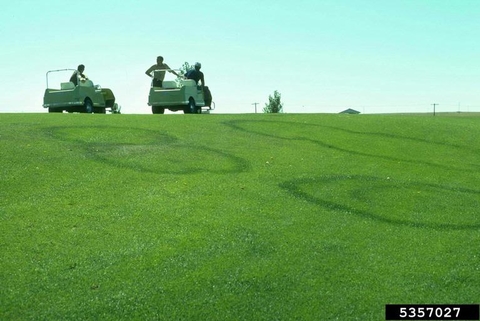Quick facts
- Mushrooms may appear in lawns due to excess rain or irrigation.
- Mushrooms are fruiting bodies of soil fungi.
- Mushrooms are rarely indicative of a lawn disease.
During periods of heavy rain, mushrooms may start to pop up in lawns. Their appearance may cause you to be concerned about the health of your lawn and whether or not your lawn has a disease. Rest easy: a vast majority of mushrooms in lawns are not related to disease.
Mushrooms are the fruiting bodies of fungi living in the soil and thatch. They produce microscopic spores that propagate the fungus. It’s quite common for them to appear during periods of moist conditions resulting from either natural rainfall or excessive irrigation.
Why mushrooms develop
- Plant material (roots, stems, leaves, grass blades, thatch, old tree roots) are constantly breaking down in soil naturally.
- Wet conditions speed up the decay of organic matter.
- Fungi live on decaying organic matter in the soil.
- As organic matter decays, nutrients (especially nitrogen) become available for plant growth.
Fairy rings
Sometimes fairy rings develop in lawns especially in the spring during wet, cool weather.
- Fairy rings are arcs or circles of mushrooms growing in dark green, lush grass.
- They are usually 2 to 15 feet in diameter.
- As the fungi break down organic matter, the nutrients cause the grass to grow thicker and darker, and the surrounding lawn develops colonies of mushrooms.
How to reduce mushrooms in a lawn
- Dig or grind out stumps and tree roots after removing a tree.
- Rake your lawn in the spring to remove dead grass and plant material.
- Knock mushrooms over with a rake and remove them from the area.
- Reduce or turn off your irrigation to dry out your lawn.
- Aerate your soil in the fall to reduce soil compaction and improve drainage.
Reviewed in 2024



